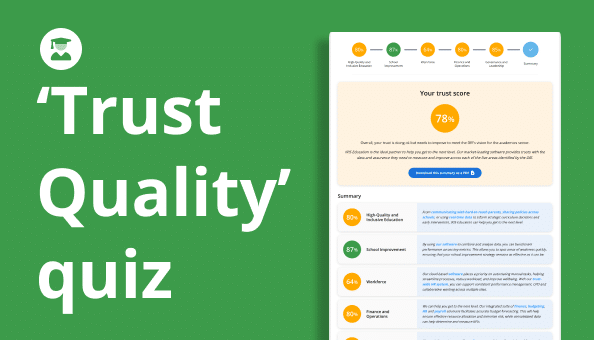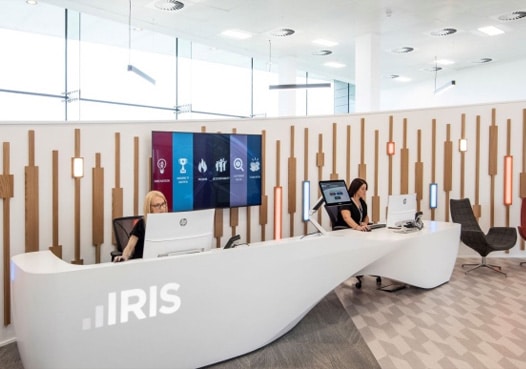Time to rethink workforce planning
Updated 25th September 2024 | 6 min read Published 2nd February 2023

Psst, we’re here to let you in on a secret, but you need to keep it hush-hush. Contrary to popular belief, workforce planning is not all about logistics and supply chains.
It’s actually got immense business benefits when applied correctly and can help all employers accurately determine the steps needed to meet current and future staffing needs in the most cost-effective way.
Sound interesting? Well, keep reading.
What exactly is workforce planning?
I hear the crowds roaring now: what is workforce planning? Simply put, workforce planning is acting with purpose.
As defined by the CIPD, workforce planning is when a business captures and analyses information to inform future people and skill demands – getting the right people, in the right place, at the right time.
Key elements include assessing proficiency gaps, worker locations, understaffed teams and performance to calculate whether employees and their skills meet the demands of your business.
What businesses can use workforce planning?
Historically, workforce planning was primarily for businesses that relied on shift workers to help organise staff.
However, following the increase in remote workers, many businesses now have a need for modern workforce management as a means of obtaining insights into where their people are.
The strategic benefits of workforce planning: the four Bs
Effective use of workforce planning has a wide array of strategic benefits, including:
Better use of finances: analysing people data to determine workforce contributions places you in a far better position to allocate resources, recruit the right people and nurture existing talent in the most efficient way, helping each penny stretch further.
Better employee experience: are teams understaffed? Do employees have the right skills? Are some periods busier than others? With workforce planning, you can make business decisions based on facts, ensuring the needs of your people are met to provide the best possible experience. Additionally, with the right HR software, you can support employee experience and engagement strategies by giving shift workers more control over when and how much they work.
Better collaboration: knowledge and teamwork broaden horizons. With workforce planning, you can see how specific actions impact other areas of the business – both positively and negatively – helping optimise interdepartmental collaboration.
Better visibility: in many industries, remote working is now a fundamental employee expectation. With this added flexibility in mind, do you know where your employees are? It can be easy to lose track of hybrid workers, but with modern workforce planning, you can ensure greater visibility of all your teams, enabling a clear look into the logistics of your workforce.
Challenges with workforce planning
While there’s no silver bullet to the current talent shortage, workforce planning goes a long way in optimising your efforts.
However, the effectiveness of your workforce planning relies heavily on the data you have.
Unfortunately, many businesses fall short, as the data they’re capturing continues to reflect an old way of working.
Jargon aside, what do we mean by an old way of working? Essentially, measuring the effectiveness of your workforce by counting bums on seats and the time people start/finish simply won’t apply to many employees.
Measuring if a department is understaffed by the number of people working 9-5 or how productive people are by the tasks churned out won’t offer a true reflection.
How to update your data to truly benefit from workforce planning
Productivity must be viewed on a broader structure, examining the wider business impact.
Performance methodologies such as OKRs (objectives and key results) offer tangible ways to determine whether an employee is delivering and if not, what can be done.
The objectives offer goals, and the key results show how employees will get there.
With OKR methodology, it’s far easier to collate data which shows a true reflection of how a person, team or department are performing.
Additionally, with a professional HR system, real-time insights into your workforce can be obtained, enabling accurate and fast decisions to be made.
Locating teams with high churn, individuals struggling with their objectives and opinions on what isn’t working can all be easily obtained via HR software, supporting workforce planning.
Four steps to effective workforce planning
Once your data is up to scratch, you can begin workforce planning; consider the following four steps as a starting point:
- Determine objectives: before you can make any decisions, it’s vital that you outline what you want to achieve, helping guide all future actions.
- Analyse your data: now that you know what you’re aiming for, begin analysing your data to locate areas that need added support. Perhaps there are skill gaps, or simply, more heads are needed. As your overall objectives are set, you can use that bigger picture when examining data, helping prioritise areas when budgets are tight.
- Pre-empt future issues: you’ve got the goals, and you’ve got the data – it’s now time to determine potential people issues that could halt the business.
- Put a plan in place: using tangible insights, develop a strategy to overcome any obstacles and fuel success. Perhaps it’s bringing on temp workers during a busy period or investing in training for a department.
The power of technology
In the past, workforce planning has been manually managed via spreadsheets, but as the way we capture workforce information must evolve (HR software), so should the way it is used.
Here are a few ways modern workforce planning software can help:
More control with self-service
With technology, those who work shifts have far more opportunity to determine how much they work – something crucial during the cost of living crisis.
Thanks to self-service options within the tech, workers can not only see their current rota in the app, but also put their name forward for available hours or put a general message out requesting more hours.
Self-service functionality also functions in reverse, and if a shift worker can no longer work on a specific day – perhaps there’s an emergency or plans have arisen – they can swap that shift directly in the app.
Dynamic teams
The analytics provided by workforce planning software are extremely powerful; information is remembered, and the tool predicts future busy periods, for example, the Christmas season for retail businesses or summer for leisure locations.
These insights enable you to be far more dynamic and precise with your planning, ensuring busy periods are covered with the appropriate staff before they escalate.
The dynamic elements of workforce planning can even be taken a step further.
Say you have a project that requires a specific skillset – with today's software, you can quickly locate staff that fit the purpose, helping create increasingly dynamic teams.
Smarter scheduling
Within the platform, workers can provide information covering their skills and preferences, ensuring when it comes to scheduling, they’re assigned the most optimal work.
For example, perhaps an employee is unable to work mornings due to taking their children to school – by inputting no morning shifts into the HR system, it’s guaranteed they’re only assigned afternoon work.
Unlock your power
Having great software to underpin your processes is a major benefit, helping you unlock the power to save time and focus your efforts on what delivers the most value. Learn more about unlocking the power of your business with HR software.
Additionally, for more help with unlocking your power, we created a complimentary guide covering the main challenges and trends for HR and how to overcome them.








